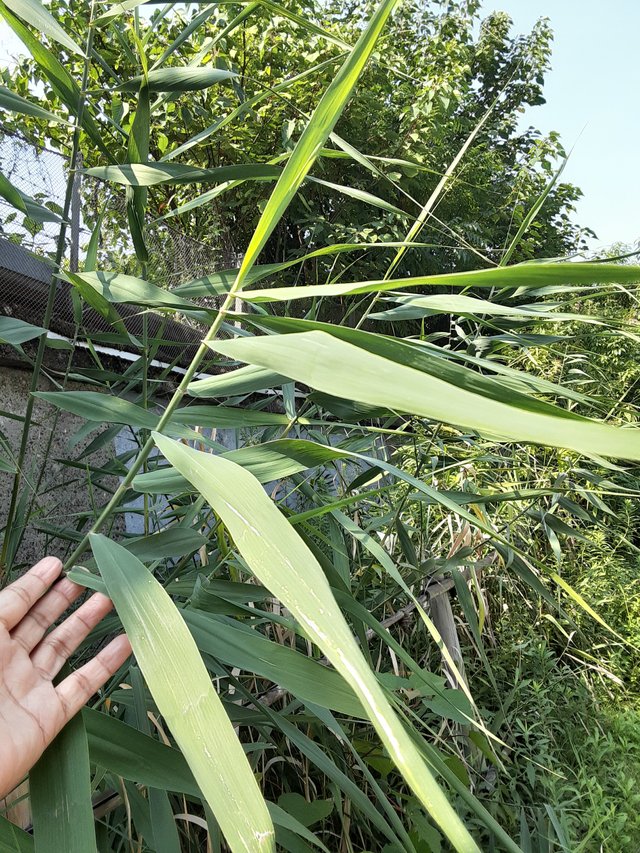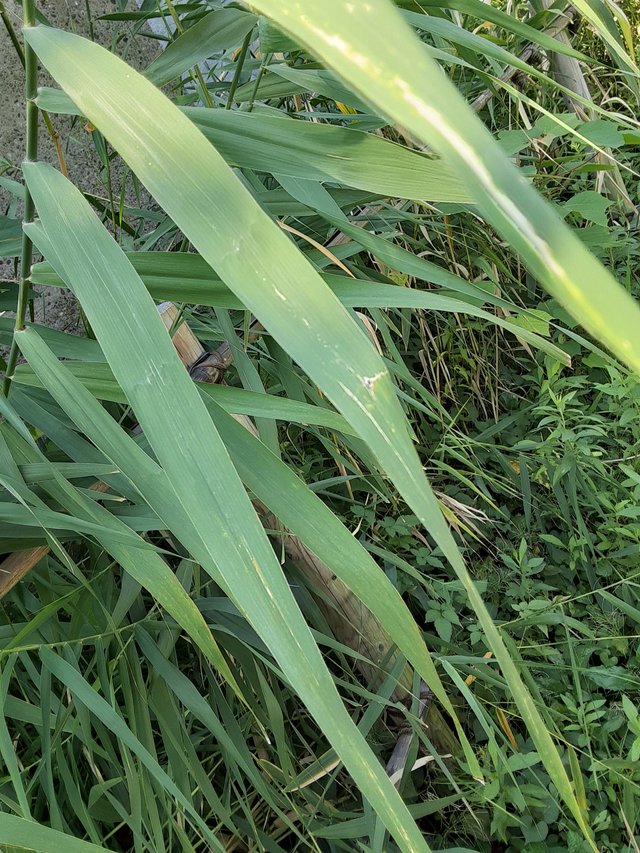
Phalaris arundinacea, commonly known as reed canarygrass, is a perennial grass native to Europe, Asia, and North Africa. It's a tall, robust plant that can grow up to 2 meters (6 feet) in height. Its leaves are long, flat, and have a distinctive bright green color.
The leaves of reed canarygrass are characterized by their parallel venation. This means that the veins run parallel to each other, a feature common in monocotyledonous plants. The leaf margins (edges) are generally smooth but can sometimes be slightly rough. The leaf sheath, which encloses the base of the leaf, is long and often closed.
Reed canarygrass is an adaptable plant that can thrive in a variety of habitats, including wetlands, meadows, and along waterways. It is often found in areas with moist, fertile soils. Due to its aggressive growth habits and ability to displace native vegetation, it can become invasive in certain regions.

In addition to its ecological role, reed canarygrass has several practical uses. It is a valuable forage crop for livestock, particularly cattle and horses. The plant provides a good source of nutrition and can improve soil quality. It is also used for erosion control and as a biofuel.
Overall, Phalaris arundinacea is a versatile and widely distributed grass species with distinctive leaves and a range of ecological and economic benefits.
Ref.:
 |  |
Upvoted! Thank you for supporting witness @jswit.
Downvoting a post can decrease pending rewards and make it less visible. Common reasons:
Submit